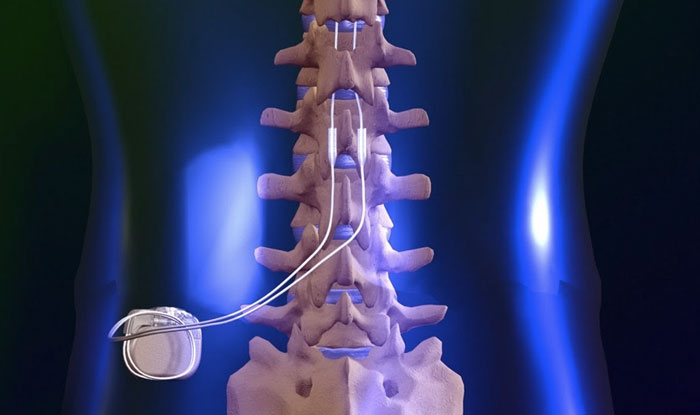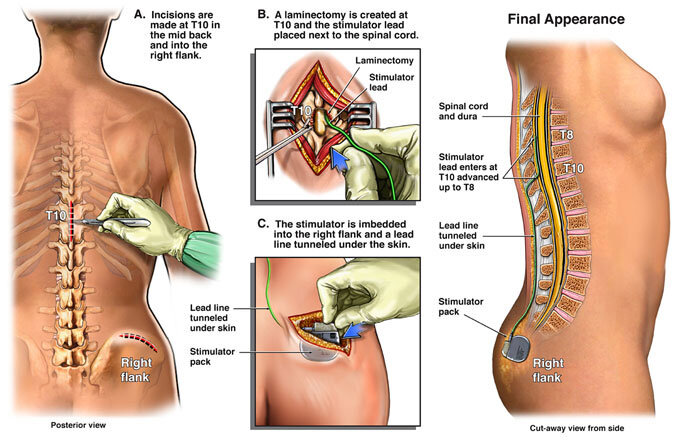Questions about SCS therapy? Watch the video as Dr. Vogelgesang explains in detail how Nevro can help you get on the right path to being pain free.
Spinal Cord Stimulator
Spinal Cord Stimulation (SCS) is an invasive procedure that is used for nerve pain due to the post-laminectomy syndrome, radiculopathy, complex regional pain syndrome (CRPS), phantom limb pain, or neuropathy that is resistant to medications and minimally-invasive, injection-based treatments. Spinal cord stimulation therapy includes implantation of a special device called spinal cord stimulator.
What is spinal cord stimulator
A spinal cord stimulator is a small device with electrodes that are placed in epidural space under live x-ray guidance. The epidural space is a space that is located in your spine within the spinal canal. This space sits between two planes of tissue: the sac of tissue that houses your spinal cord (dural sac) and the vertebral bones. The epidural space contains fat tissue with blood vessels and nerve roots. The electrode sends stimuli to your spinal cord that compete with the entry of pain signals. Instead of pain, you may feel a mild tingling sensation in the area where you usually feel pain.
How is it performed?
There are two phases of spinal cord stimulator implantation. First, a trial is aimed to test out the device before permanent implantation. The tip of the electrodes’ lead is placed in your epidural space. The tail is secured with tape and dressings to your back and connected to an external controller that can increase or decrease stimulation. You will be able to test this system for 3-4 days. If the spinal cord stimulator provides sufficient amount in pain reduction and improves your quality of life, you may be a candidate for permanent implantation. If the trial does not provide adequate pain relief, the lead of electrodes can be removed easily without damage to the spinal cord or nerves.
Spinal cord stimulator trials are performed under live X-ray guidance to ensure the accuracy and safety of this procedure. You will be asked to lie on your stomach then back will be cleaned with an antiseptic, and a sterile drape will be placed. The physician will inject a local anesthetic to numb the skin. An epidural needle will then be guided to the epidural space. The lead will be placed in the epidural space under x-ray guidance. During the procedure, you should be able to give feedback and confirm proper coverage of your painful areas.
Risks and side effects
The potential risks of side effects are very low and include spinal cord stimulator infection, bleeding, allergic reaction, and prolonged increases in pain. Your physician will use x-ray guidance and sterile techniques to reduce these risks, as well as to reduce the risk of nerve damage and spinal headache.
References:
Mayfield Clinic. (2016) https://www.mayfieldclinic.com/pe-stim.htm. November 17, 2016.
Song, Jason J. et al. (2014) Present and potential use of spinal cord stimulation to control chronic pain. Pain Physician. 17(3): 235–246.

